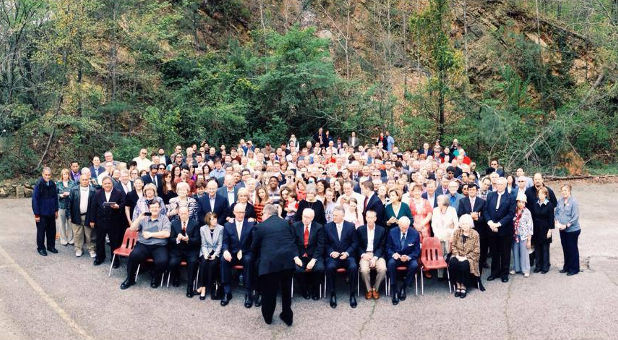Global, Diverse and Growing: The Assemblies of God at 100
Ethnic Diversity
The 2013 statistics reveal significant ethnic diversity in the AG: Asian/Pacific Islander (4.4 percent); black (9.6 percent); Hispanic (21.7 percent); Native American (1.5 percent); white (58.7 percent); and other/mixed (4.0 percent). These numbers suggest that the AG closely mirrors the ethnic makeup of the U.S. population as a whole. The 2010 U.S. census revealed the following racial breakdown of the U.S. population: Asian/Pacific Islander (5 percent); black (12.6 percent); Hispanic (16.3 percent); Native American (0.9 percent); white (63.7 percent); and other/mixed (6.2 percent).
Much of the numerical growth in the AG in recent decades has been among ethnic minorities. From 2003 to 2013, the number of U.S. adherents increased by 14.6 percent, from 2,729,562 to 3,127,857. During this period, the number of white adherents decreased by 1.9 percent (-34,922), while the number of non-white adherents increased by 50.5 percent (+433,217).
The AG’s growth in America is partly due to immigration. The AG is a global church. About 1 percent of the world’s population identifies with the AG. Only 4.6 percent of AG adherents worldwide live in the United States. Pentecostals who move to America from other regions of the world often bring with them a faith, burnished by persecution and deprivation, that is an important part of their identity.
Pentecostals who move to America are often like pollen scattered by a strong wind—they plant churches wherever they happen to land. Strong African, Slavic, Asian, Pacific Islander and Hispanic AG churches are taking root in American soil, and their congregations sing, preach and testify in the tongues of their native countries.
Interestingly, this demographic shift is also helping to usher in a global realignment of Christianity. Anglican, Presbyterian and Methodist Christians in Africa, Asia and Latin America are generally evangelical in belief, if not Pentecostal in worship, and often have much more in common with their brothers and sisters in the AG than they do with liberal members of their own denominations in the West.
The Coming Revival
This demographic shift carries enormous implications for the future of the church. Certain segments of the AG are in spiritual and numerical decline, mirroring the general decline of Western culture and its rejection of biblical values. Non-whites and immigrants, often embracing a strong Pentecostal identity, are on the ascendancy.
Carl Brumback, in his 1961 book, Suddenly from Heaven: A History of the Assemblies of God, anticipated this moment. He lamented the decline in spirituality that he witnessed among American Pentecostals over 50 years ago. He wrote that “it would be easy to become defeatists.” However, he foresaw a coming revival, which he believed would fulfill prophecy in Joel 2:28 and Acts 2:17: “In the last days … I will pour out my Spirit upon all flesh.”
Brumback’s prediction is coming true before our eyes. He identified two trends, then in their infancy, which gave him great optimism about the future of the AG. First, he saw a Pentecostal outpouring on “representatives of practically every branch of Christendom in these United States.” Second, he believed that “The Revival That Is” in foreign lands will bring “The Revival That Is to Come” in America. “The simplicity, zeal and spiritual power of our brethren around the world,” he forecast, will ultimately lead to “a new visitation upon the homeland.”
The Assemblies of God is growing in America. But the real story is the ethnic transformation of the AG. It is becoming less white and more reflective of the ethnic, linguistic and social diversity that exists in the global church. The founding fathers and mothers of the AG laid the foundation for this ethnic shift when they committed the Fellowship in November 1914 to “the greatest evangelism that the world has ever seen.”
In 1921 the AG adopted the indigenous church principle as its official missions strategy in order to better carry out world evangelism. The implementation of this strategy—which recognizes that each national church is autonomous and not controlled by Western interests—resulted in the development of strong national churches and leaders. And now, in a fitting turn of events, those churches may be bringing renewal to America.
Darrin J. Rodgers, M.A., J.D., is director of the Flower Pentecostal Heritage Center and editor of Assemblies of God Heritage magazine.














































